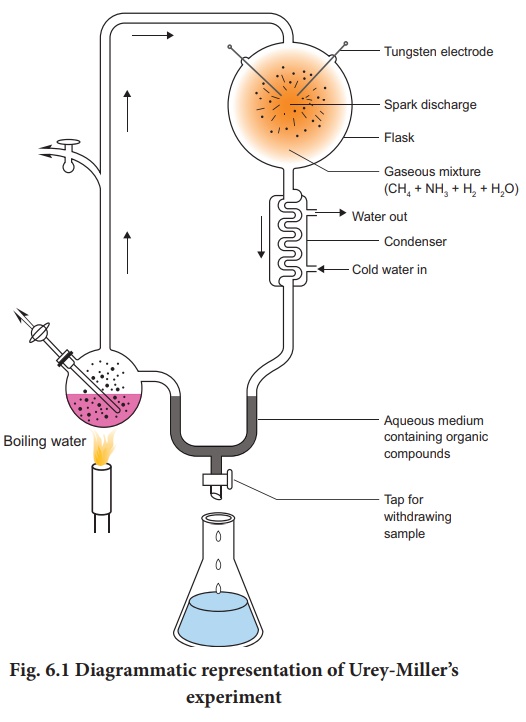Zoology - Biological evolution | 12th Zoology : Chapter 6 : Evolution
Chapter: 12th Zoology : Chapter 6 : Evolution
Biological evolution
Biological
evolution
Formation of protobionts
Abiotically produced
molecules can spontaneously self assemble into droplets that enclose a watery
solution and maintain a chemical environment different from their surroundings.
Scientists call these spheres as ‘protobionts’. Liposomes are lipids in a
solution that can self assemble into a lipid bilayer. Some of the proteins
inside the liposomes acquired the properties of enzymes resulting in fast
multiplication of molecules.
The coacervates with
nucleoprotein and nutrients had a limiting surface membrane that had the
characters of a virus or free living genes. Sub sequently number of genes
united to form ‘proto viruses’ somewhat similar to present day viruses. Two
major cell types that appeared during this time were significant. One form of
the earliest cell contained clumps of nucleoproteins embedded in the cell
substance. Such cells were similar to the Monera. They are considered as
ancestral to the modern bacteria and blue green algae. The other form of
earliest cells contained nucleoprotein clumps that condensed into a central
mass surrounded by a thin membrane. This membrane separated nucleoproteins from
the cell substances. Such cells were referred to as Protista. When the natural
sources of food in the ocean declined in course of time the ancestors of Monera
and Protista had to evolve different methods for food procurement. These may be
summarized as parasitism, saprophytism, predator or animalism and
chemosynthesis or photosynthesis. When the number of photosynthetic organisms
increased there was an increase in the free O2 in the sea and
atmosphere.
CH4+2O2
→ CO2 +2H2O
4NH3+3O2
→ 2N2+6H2O
The atmospheric oxygen
combined with methane and ammonia to form CO2 and free nitrogen. The
presence of the free O2 brought about the evolution of aerobic
respiration which could yield large amounts of energy by oxidation of food
stuffs. Thus Prokaryotes and Eukaryotes evolved.
Experimental approach to the origin of life
Urey and Miller (1953), paved way for
understanding the possible synthesis of organic compounds that led to the
appearance of living organisms is depicted in the Fig. 6.1. In their
experiment, a mixture of gases was allowed to circulate over electric discharge
from an tungsten electrode. A small flask was kept boiling and the steam
emanating from it was made to mix with the mixture of gases (ammonia, methane
and hydrogen) in the large chamber that was connected to the boiling water. The
steam condensed to form water which ran down the ‘U’ tube. Experiment was
conducted continuously for a week and the liquid was analysed.
Glycine, alanine, beta alanine and aspartic acid were
identified. Thus Miller’s experiments had an insight as to the possibility of
abiogenetic synthesis of large amount
of variety of organic compounds in nature from a mixture of sample gases
in which the only source of carbon was methane. Later in similar experiments,
formation of all types of amino acids, and nitrogen bases were noticed.

Related Topics